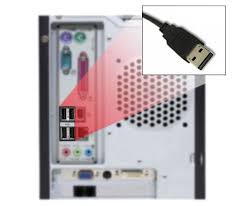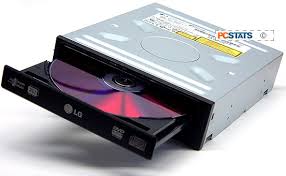
A Desktop computer is a personal computer (PC) in a form intended for regular use at a single location, as opposed to a mobile laptop or portable computer. Early desktop computers are designed to lay flat on the desk, while modern towers stand upright. Most modern desktop computers have separate screens and keyboards.
Prior to the widespread use of microprocessors, a computer that could fit on a desk was considered remarkably small. Early personal computers, like the IBM PC, were "desktop" machines, with a horizontally-oriented computer case, usually intended to have the display screen placed on top to save space on the desktop. In modern usage the word "desktop" usually refers to tower cases that are in fact more often located on the floor under the desk than on a desk.
Technically speaking desktop and tower computers are two different styles of computer case that use desk space in varying ways. Cases intended for home theater PC systems are usually considered to be desktop cases in both senses, regardless of orientation and placement.
History of Desktop Computer
Early computers took the space of a room. Minicomputers generally fit into one or a few refrigerator sized racks. It was not until the 1970s when computers such as the HP 9800 series desktop computers were fully programmable computers that fit entirely on top of a desk. The first large calculators were introduced in 1971, leading to a model programmable in BASIC in 1972. They used a smaller version of a minicomputer design based on ROM memory and had small one-line LED alphanumeric displays. They could draw computer graphics with a plotter. The Wang 2200 of 1973 had a full-size cathode ray tube (CRT) and cassette tape storage. The IBM 5100 in 1975 had a small CRT display and could be programmed in BASIC and APL. These were generally expensive specialized computers sold for business or scientific uses. By the late 1970s and 1980s personal computers, such as the Apple II series and the IBM Personal Computer used standard processors to reduce cost to put a complete computer on top of a desk with a separate monitor. These would find uses in the home as well as in business and industry, and later incorporate graphic user interfaces and powerful networked operating systems such as Mac (Macintosh) and Windows.
1. A desktop computer connects to the internet more easily than a laptop whereas a computer cannot be used during a blackout.
2. A desktop computer wont run out of battery. it is more powerful than a portable computer and has a larger storage capacity than a portable computer.
Disadvantages of Desktop Computer
1. When there is a blackout, the computer will switch off and you will loose unsaved work.
2. Desktop Computers are not portable.
3. Desktop Computers have more power usage.
Features and Functions of purchasing a Desktop Computer
1. Processor or CPU CPU stands for central processing unit; it is the brains of the computer. In terms of computing power, the CPU is the most important element of a computer system and the speed, which is given in GHz, and quality of the processor will greatly determine the performance of the computer. There are budget, mid range and high-end processors. The one that you need will depend on what the computer will be used for. Often times you can get a nice high-end processor that is no longer manufactured for the same price of a brand new budget processor.


For basic computer functions, such as email, Internet and word processing a budget or mid range model is fine. But, for gaming, and especially 3D gaming, video editing and processing, movie watching and for some business functions a high-end processor is necessary.
High End Processors: The high-end processors are top of the line and will cost quite a bit. An interesting fact is that while these processors cost twice as much as the mid range types they perform only about 25-50% better. Today, the top of the line processors are: Intel Core 2 Extreme QX9650 and Higher, Intel Core 2 Quad Q9650 and the Intel Core i7 Extreme 965.
2. RAM Memory RAM memory refers to the amount of programs you can run on computers without running into slow downs, crashes and drags in performance.

The more RAM the better as it greatly affects the speed and performance of the computer, especially for video, entertainment and gaming. 1GB is good for most computer functions, 2GB, 3GB and 4GB is really great. At least 2GB, but 3GB and 4Gb is better for the optimal gaming and media experiences.
It is a good idea to check and make sure that there are open memory upgrade slots so you can always add more memory RAM, it is fairly cheap and easy to install.
3. Ports and Connections Ports are the connections that come with a computer for attaching peripherals, such as such as printers, Internet/Ethernet, iPods, scanners and others. One of the most important and useful ports is the USB, which the computer should have at least 4 of.

Other useful ports are Ethernet for high speed Internet and networking, FireWire port and a printer port. Media card readers are also important that support a variety of flash memory cards for peripherals. Overall, the more ports you have the more variety and options you will have for peripherals.
4. Optical Drives - CD/DVD/Blu-ray A useful component is an optical drive such as a DVD/CD or Blu Ray high-def burner. While many computers come with a CD-ROM, these can only read disks, if you want to burn movie and music disks, or to do disk backups of your data from your computer, then a burner optical drive is most handy.
